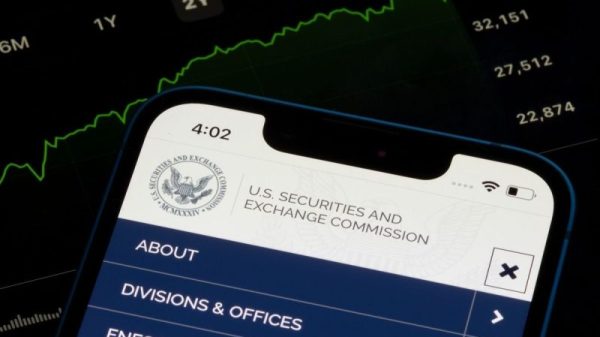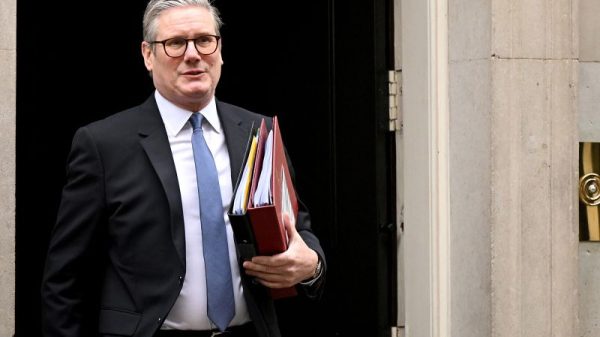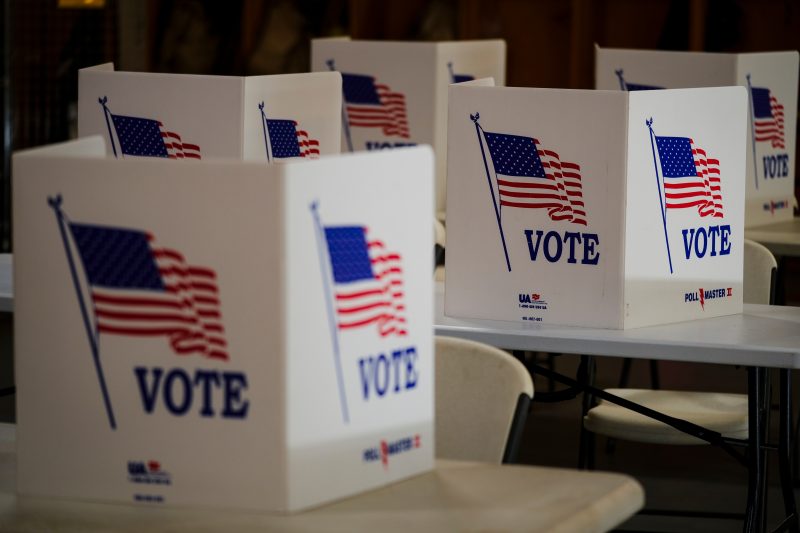As of writing, Vice President Kamala Harris leads in The Washington Post’s national average of presidential polls by two percentage points. She has held a similar lead for a few weeks now, since about the beginning of the month.
Of course, as any American born before the year 2000 is aware, the presidency is determined not by the national vote but by the accumulation of electors allocated by individual states. In the seven states that are closest in the race — Arizona, Georgia (come on, say it along with me!), Michigan, Nevada, North Carolina, Pennsylvania and Wisconsin — Harris has leads in four and trails in three. If those results held precisely as the averages suggest, Harris would eke out a victory in November.
But they will not. Polling averages are aggregations of individual polls, polls with margins of sampling error that inform the audience about the extent to which you might expect the results to deviate from the objective reality of public opinion. Because there will be deviation.
That objective reality, of course, also depends on assumptions about who constitutes “the public”: Are we measuring voting preferences among all adults? Among those who say they’re definitely going to vote? Among those who are most likely to definitely vote? In past elections, assumptions pollsters have made about the likely electorate have been off the mark, making the poll results less predictive than they seemed.
So let’s take a step back. Let’s begin by considering what current state polling says about the state of the presidential contest.
We’ll use 538’s averages of polling since the beginning of August because that allows us to compare support for Democrat Harris and Republican former president Donald Trump independently. You can see that 538’s averages (predictably) offer a similar result as The Post’s averages: Trump leads in three of the aforementioned states and Harris in four. We’ve included Minnesota here for reasons that will become apparent in a moment; Harris leads there as well.
While many people point to 538’s and The Post’s averages to get a sense of where the race stands, they often ignore the range of uncertainty that surrounds those numbers. Polling averages have lower margins of error than individual polls, but they are not precise in the way that they are often presented.
The average, instead, is the most likely of a number of possible outcomes derived from the poll. The Post includes a range with our average that encapsulates where 90 percent of outcomes would be expected to land; 538 includes a range that covers 95 percent. You can see those ranges below.
The more those ranges overlap, the harder it is to distinguish who might actually be expected to win. In Minnesota, the ranges don’t overlap at all, meaning we can be very confident that Harris will win that state. In North Carolina, they overlap heavily, meaning that Trump’s lead is by no means certain. Even in Wisconsin, there is overlap — indicating a lower chance that Trump outperforms Harris according to the polls, but a chance nonetheless.
This is why polling forecasts like 538’s generally present their expectations for the election as a range of odds. As of writing, 538’s forecast suggests that Harris has a 58 percent chance of winning, a figure derived by running thousands of versions of the election based on current polling and seeing how often each candidate wins individual states given the uncertainty presented by the polling.
The odds presented in election forecasts are themselves often presented as hard-and-fast numbers. When Trump had a lead in Nate Silver’s forecast a few weeks ago, he and his supporters were presenting numbers like the ones above as a 16-point lead for Trump or whatever. But that’s not how it works.
Take the image below. It has 100 circles, 58 of them blue. If you pick two random numbers between 1 and 10 inclusive and use those to find a column and row on the grid, you’re more likely to land on a blue circle. But the odds are good that, instead, you’ll land on a red one.
Do this enough and you’ll find that you land on a red circle about 42 percent of the time. That is how the odds work.
What the polling and the forecasts suggest is the same thing they have suggested for weeks: The race is close, and the outcome is hard to predict. It is likely that this will remain until Election Day, with the outcome of the presidency determined by things like the ability of campaigns to turn out their voters and the motivation of different demographic groups to cast a ballot.
You’ll often see, as elections grind on, maps of predicted outcomes by state, with swing states depicted with a color indicating which candidate currently has the lead. Those maps are interesting and fun to discuss, but they understate the uncertainty involved in assessing likely election outcomes. What’s more, they’re often quickly out of date.
In light of that, we’ve created a map that will almost certainly hold up well between now and Nov. 5. You can present it at any moment and it will capture the true state of the race as indicated by polling and by the ways in which polling has at times failed to measure public opinion accurately.
Perhaps, as the weeks grind on, more states will move into Minnesota territory, with one candidate pulling away from the other. But that’s unlikely. There aren’t that many weeks left, for one thing, and the nature of this campaign has been stability in the face of tumultuous news events.
So print the map out and keep it handy. And the next time someone asks you how you think the race will look as voters vote, feel free to offer it up as the most accurate depiction available.







































